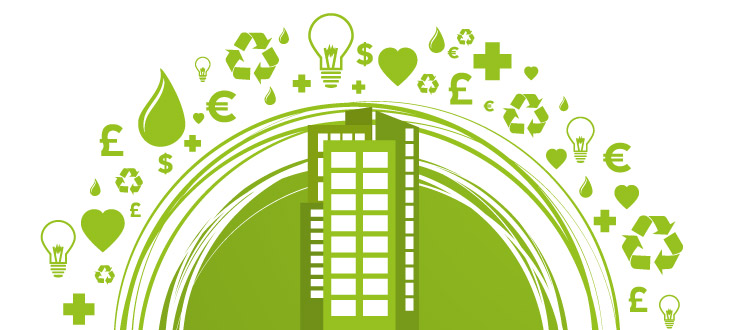HealthManagement, Volume 16 - Issue 2, 2016
AWARD-WINNING ZULEKHA HOSPITALS OFFERS INSIGHTS INTO SUCCESSFUL PROJECT MANAGEMENT

One of the crucial elements in ensuring building sustainability is a fully developed Operation and Maintenance (O&M) plan. It comprises a set of planned activities that encompass not only technical aspects but also managerial, social, financial and institutional issues. All of them must be directed towards the elimination or reduction of major constraints that prevent the achievement of sustainability.
Very often, buildings fail to comply with basic sustainability standards due to poor planning, inadequate resources including the lack of a highly skilled and trained technical team, specific test equipment and tools deficiency or the absence of an after-sales service support from suppliers.
O&M processes are often neglected or discussed and introduced only after the project is completed. This usually affects the credibility of the investments made and the functioning of the services provided. To minimise losses, an O&M plan should be formulated during the design stage itself, so that each project phase embraces the O&M guidelines and ensures the building becomes sustainable.
O&M takes into account all of the activities needed to run Building Engineering Services to ensure efficiency, effectiveness and sustainability of facilities. While Operation refers to the direct access to the system by its users and governs their access, Maintenance focuses on the technical activities, planned or reactive, which are needed to keep Building Engineering Services systems working efficiently. This is why the entire O&M process requires specially-trained staff and appropriate procedures in place to carry out substantial auditing and to ensure a viable life cycle of the process.
Challenges
The Main Challenges the O&M Plan Brings Are as Follows:
- Implementing the O&M plan in the project concept during
the design stage;
- Project execution and commissioning plan should incorporate
O&M plan;
- Project specific O&M manual should be ready upon
completion of the project. The manual should serve as a core document to assess
all aspects of the project and the O&M for the Building Engineering
Services management team to ensure sustainability in each area of its
operation.
A Requirements Checklist for O&M Includes:
- Adequacy of skilled/trained experienced O&M technical team
with proper engineering workshop facility;
- Building Automation and CMMS ;
- Implementation of O&M plan with specific timeframes;
- Ensuring quality power supply for all critical services, energy
auditing and energy management;
- Ensure quality water supply for all critical application
and water conservation management including water treatment and reuse;
- Ensure Indoor Air Quality and Exhaust Air Management including
energy recovery;
- Hazardous and non-hazardous waste management procedures;
- Building Fire Safety Management including providing HSE training
to all staff;
- Safety & Security Service management;
- Effective communication to all staff;
- Training of all staff: new staff orientation/departmental/mandatory
training.
Maintaining sustainability is extremely challenging and it requires cooperation of a dedicated team 24 hours a day. Usually, a team has to ensure that every individual piece of equipment is functioning, keep and maintain its history to track its past breakdowns and manage preventive maintenance logs and the details of the replacement parts.
These kinds of tasks are extremely laborious, time-consuming and involve a huge amount of paperwork and record keeping, subsequently causing storage space issues. To solve this issue, our engineering team has developed a solution by incorporating Facility Management Software within the existing Building Management System. This proved to be conducive in planning, monitoring and retrieving of the information from the control room.
Another challenging issue we faced was related to interdepartmental movements of staff in the building. To address that, we developed a pneumatic tube system allowing for the transport of samples, blood, body fluids and MR files, for example, between departments with an air-cushioned vacuum support. This automated approach was a milestone that helped us to streamline the system and achieve higher efficiency and effectiveness with much lower manpower and waste of paper.
Supporting Sustainability
We are focusing on three different perspectives: energy management, water conservation, and indoor environment management. Making a building energy-efficient and sustainable requires the provision of automation applicable to the building management system, lighting control system, chiller plant manager, and ensuring the design maximises daylight exposure while being heat resistant.
To ensure efficient energy management, we designed a sub-meeting facility for all major energy flows as well as a water supply facility to maintain its quality for different applications and to optimise its reuse.
Indoor Air Quality is a major concern in all air-conditioned buildings and its design should ensure proper air barriers, dirty air exhaust and +ve and –ve pressure maintenance to avoid air contamination. It is also essential to ensure adequate fresh air level by having an adequate number of air changes with energy recovery facility.
The ultimate challenge is to maintain the indoor setting as a healing environment and to achieve it, the design of the building and its interior have to be compatible with mechanical and electrical engineering services (for example the Nurse Call system throughout the inpatient areas).
Maintaining a healing environment also requires appropriate quality air circulation while restricting the spreading of airborne diseases as per CDC/WHO norms. Last but not least, a comprehensive fire alarm system needs to be designed in such a way that all systems can be controlled and monitored from one room.
Framework for Sustainability
The Leadership in Energy and Environmental Design Standard (LEED) is the epitome of building sustainability. Our facilities in Sharjah and Dubai are aiming for LEED certifications. We are committed to and focused on being environmentally responsible and have developed resource-efficient systems addressing employee productivity, health and wellbeing, occupants’ comfort, aesthetics and durability through efficient resource management and waste reduction. This commitment is reinforced through our collaboration with the design team, architects, engineers and the contractors from the initial stages of site selection through design, construction, operation, maintenance, and renovation.
Complying with LEED Standards is at the core of our ambition and currently our facility in Sharjah is undergoing the LEED EBOM certification (EBOM - Existing Building Operation and Maintenance) while both Zulekha Hospital Dubai and Alexis Hospital in India have been constructed in compliance with the LEED certification plan. Our goal plan is to receive the LEED certification for all new projects and LEED-EBOM for all existing buildings.
Budgeting Concerns
We always plan our facility management budget ahead and set up a dedicated fund for Continues Facility Improvement for introduction of new technologies, energy-efficient controls, equipment, and solutions to increase its productivity and life-cycle and ensuring minimal waste generation and appropriate staff training.
We usually dedicate 20-35 percent of the total Facility Management budget to sustainability. Even though the funds allocated for maintaining or achieving sustainability are quite high, our past experience proves that we can recover the invested amount within a prescribed timeframe.
Zulekha Hospitals Group includes two multidisciplinary hospitals in Dubai and Sharjah, as well as one diagnostic centre, three UAE medical centres and three pharmacies. In March this year, it received the Best Sustainable Hospital Award at the Hospital Build & Infrastructure Awards, and the Dubai Quality Award for its commitment to quality service and business excellence.
Key Points
- Establish a fully developed Operation and Maintenance
(O&M) plan before start of project.
- Identify challenges
for sustainability at onset of works and for ongoing maintenance and address
them.
- Main sustainability areas are energy management, water conservation,
and indoor environment management.
- Aim for recognised
sustainability certification such as LEED.
- Allocate part of budget to achieving and maintaining sustainability.


